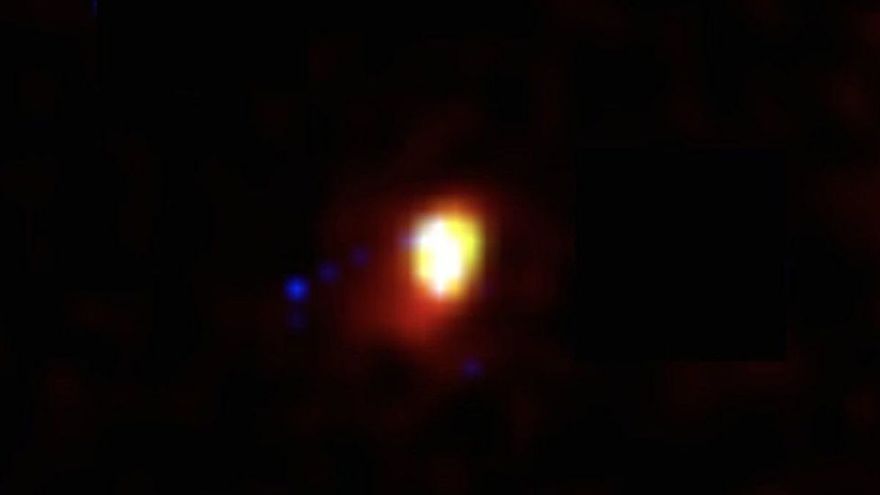The CEERS-93316 galaxy, which existed only 235 million years after the Big Bang and is located 35 billion light-years from Earth, is the most distant new galaxy ever observed by humans. James Webb managed to break his own record, just a few days after declaring the former farthest galaxy: scientists believe that the enormous power of the telescope will make discoveries of this kind possible on a permanent basis.
Using data from NASA’s James Webb Space Telescope, a team of astronomers led by the University of Edinburgh in Scotland has discovered the most distant new galaxy ever observed: a galaxy CEERS-93316Formed only 235 million years after the Big Bang and located at a distance of 35 billion light years from Earth.
A few days ago, it was announced GLASS-z13 (GN-z13), observed 300 million years after the Big Bang, was the most distant galaxy ever discovered. However, in just one week The amazing potential of James Webb It became more than clear: the new discovery managed to go beyond 65 million years of universe history and estimate a galaxy that existed about 13,565 million years ago.
Ages to be confirmed
As mentioned in a press releaseHowever, both the Scottish team’s new discovery and the previous week’s discovery still need to be confirmed by further analysis and studies. However, everything indicates that the James Webb Telescope will facilitate incredible progress in terms of Knowing the universe in its beginningsbringing humanity closer to a new understanding of the early stages of the universe.
The galaxy CEERS-93316 has been identified as part of a research project called Cosmic Evolution Early Launch Science Survey (CEERS), which analyzes some of the first observations using the James Webb Space Telescope (JWST). The goal is to go back even further in time: While GN-z13 was 13.5 billion years old, CEERS-93316 makes it forgettable at 13.565 million years old.
galaxy CEERS-93316 It has a redshift of 16.7: This parameter is used to measure distances in the universe and describes the way in which light coming from an object is stretched due to the expansion of the universe, making it visible only in red (infrared) wavelengths, a type of electromagnetic radiation longer than visible light. The higher the redshift number, the farther away an object is and the earlier it appears in cosmic history.
Formation of the first galaxies
It is noteworthy that the JWST notes shall be subject to full spectroscopic examination, a technical process that will reveal the spectra of galaxies and explain how light, originally in visible wavelengths, is stretched into infrared radiation. Spectroscopy will also reveal the chemical composition of the objects, providing more information about the initial conditions of the universe.
According to leading theories, the first stars were powered only by hydrogen, helium, and lithium, the elements that originated in the Big Bang. The heaviest atoms, of which the so-called metals consist, were developed from these pioneer stars and their descendants. According to the scientists responsible for the new study, led by Callum Dunant, the spectroscopic examination will allow this Appreciate this configuration in galaxies specified.
The Webb Telescope, which began its scientific operations on July 12, is designed to observe objects existing up to 100 million years after the Big Bang: this means that this record is likely to be quickly broken in the coming months. in this way, Great mysteries about the beginning of the universe It may be revealed and our view of the universe will change forever.
reference
Evolution of the galaxy’s UV luminosity function at the 8-15 z redshift of JWST depth and near-infrared ground imaging.. C.T. Dunant et al. ArXiv (2022). DOI:https://doi.org/10.48550/arXiv.2207.12356

“Beer enthusiast. Subtly charming alcohol junkie. Wannabe internet buff. Typical pop culture lover.”

:quality(85)/cloudfront-us-east-1.images.arcpublishing.com/infobae/PAGKJH7CJBDBHOF4XHKELQPZV4.jpg)





More Stories
Scientist who studied coronavirus claims it was part of a computer simulation: 'It was programmed'
The surprising evolution of digital avatars – Juventud Rebelde
The new RPG from the creators of Genshin Impact hasn't been released yet, but it's already a hit. There has never been a HoYoverse game as anticipated as Zenless Zone Zero – Zenless Zone Zero